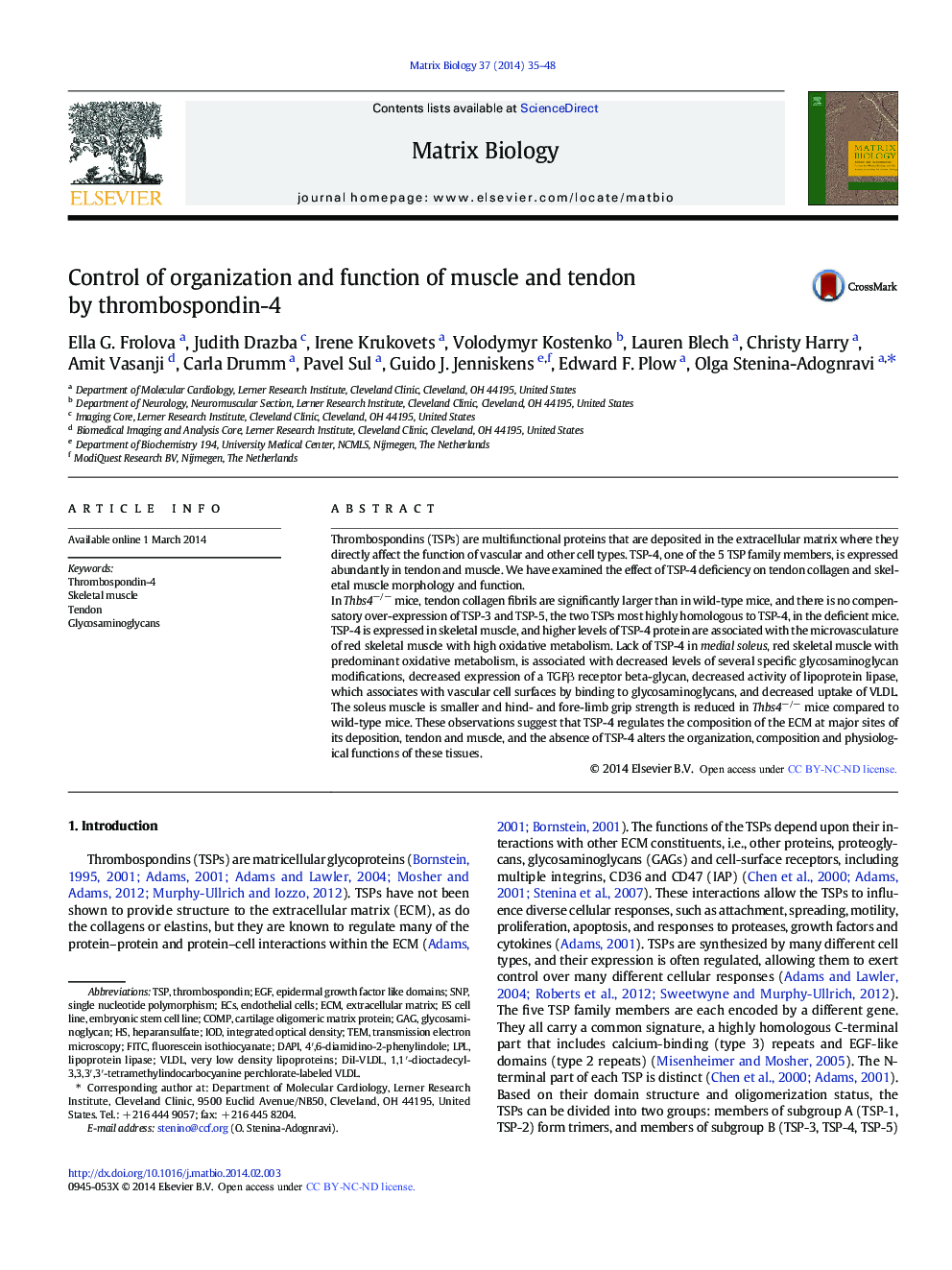| کد مقاله | کد نشریه | سال انتشار | مقاله انگلیسی | نسخه تمام متن |
|---|---|---|---|---|
| 2144780 | 1548019 | 2014 | 14 صفحه PDF | دانلود رایگان |
• TSP-4 controls the deposition of ECM in tendon and skeletal muscle.
• In tendon, TSP-4 deficiency results in altered structure of collagen fibrils.
• TSP-4 deficiency results in impaired metabolism in red skeletal muscle.
• TSP-4 deficiency causes incorrect modification of HS and, as a result, decreased activity of LpL and loss of betaglycan.
• These changes result in decreased strength of the whole limb.
Thrombospondins (TSPs) are multifunctional proteins that are deposited in the extracellular matrix where they directly affect the function of vascular and other cell types. TSP-4, one of the 5 TSP family members, is expressed abundantly in tendon and muscle. We have examined the effect of TSP-4 deficiency on tendon collagen and skeletal muscle morphology and function.In Thbs4−/− mice, tendon collagen fibrils are significantly larger than in wild-type mice, and there is no compensatory over-expression of TSP-3 and TSP-5, the two TSPs most highly homologous to TSP-4, in the deficient mice. TSP-4 is expressed in skeletal muscle, and higher levels of TSP-4 protein are associated with the microvasculature of red skeletal muscle with high oxidative metabolism. Lack of TSP-4 in medial soleus, red skeletal muscle with predominant oxidative metabolism, is associated with decreased levels of several specific glycosaminoglycan modifications, decreased expression of a TGFβ receptor beta-glycan, decreased activity of lipoprotein lipase, which associates with vascular cell surfaces by binding to glycosaminoglycans, and decreased uptake of VLDL. The soleus muscle is smaller and hind- and fore-limb grip strength is reduced in Thbs4−/− mice compared to wild-type mice. These observations suggest that TSP-4 regulates the composition of the ECM at major sites of its deposition, tendon and muscle, and the absence of TSP-4 alters the organization, composition and physiological functions of these tissues.
Journal: Matrix Biology - Volume 37, July 2014, Pages 35–48
